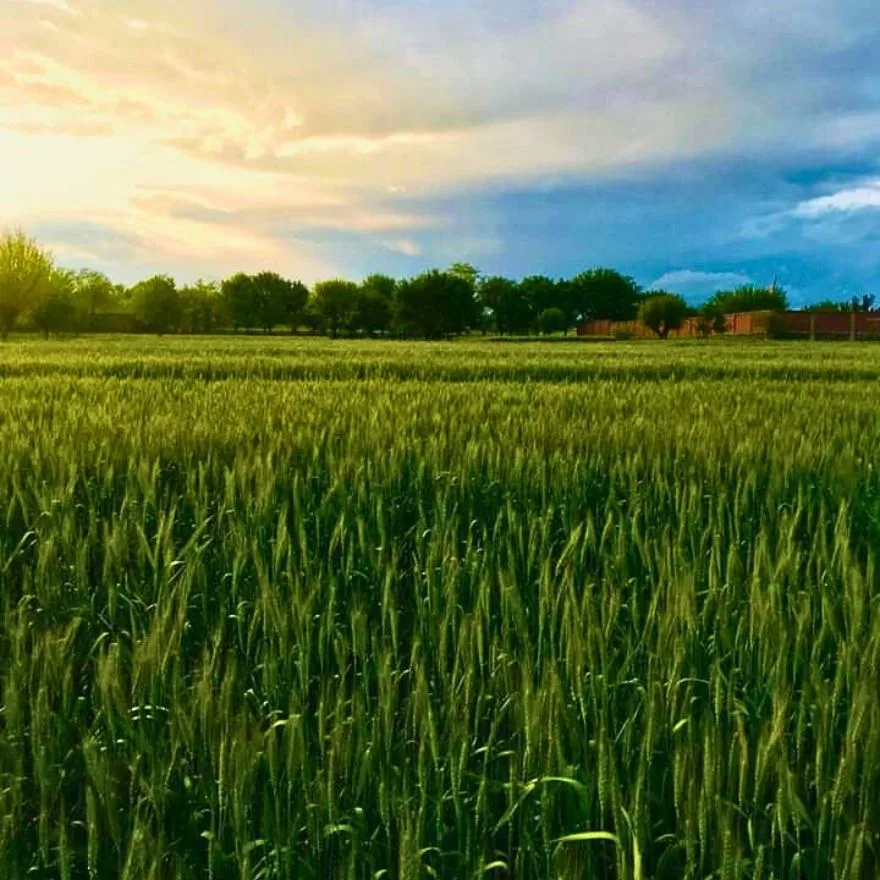
In the embrace of Afghanistan’s southeastern frontier, where rugged mountains stand as ancient guardians and valleys whisper stories of civilizations past, lies Khost—a province of untold beauty and profound resilience. As the morning light spills over the Hindu Kush, casting long shadows across time-worn paths, one cannot help but feel the pulse of something greater, something that transcends the ordinary traveler’s experience.
This is not merely a destination; it is a journey into the heart of a land where history and humanity intertwine in a dance as old as time itself.
To speak of Khost is to speak of endurance. It’s a province that has weathered both storms and silence, standing as a bridge between the ancient and the eternal. Here, beauty isn’t loud—it’s whispered through wind, woven through the kindness of its people, and etched into every sunlit ridge.
For those who seek to elevate their spirits, to soar beyond the confines of conventional tourism, Khost offers a canvas upon which the soul can paint its most authentic expressions. Join me as we traverse this remarkable landscape, where every step is an opportunity for inner transformation and every encounter a chance to rise above the mundane and touch the face of something truly extraordinary.
The Embrace of Seasons: Best Time to Visit Khost
The rhythm of Khost follows the ancient cadence of seasonal change, each period offering a unique melody for the soul’s journey.
Spring’s Awakening (April–June)
The optimal time to unfurl your wings and embark on this transcendent voyage is during the spring months of April to June, when nature awakens from winter’s embrace. The landscape transforms into a vibrant tapestry of wildflowers, painting the valleys in hues that seem borrowed from a divine palette. With gentle temperatures of 20–25°C (68–77°F), this is the perfect atmosphere for exploration without the burden of extreme weather.
Autumn’s Golden Stillness (September–November)
Alternatively, the autumn months of September to November offer a different kind of magic. The summer heat retreats, leaving behind crisp, clear days and an air filled with the scent of harvest. The temperature hovers around 15–20°C (59–68°F), inviting long walks through golden fields as locals gather crops and prepare for winter—a living testament to the enduring cycle of life and sustenance.
Avoid the summer months of July and August, when temperatures can soar above 35°C (95°F), and the winter stretch from December to March, when snow often blocks access to mountain passes and rural roads.
Five Awe-Inspiring Places to Visit in Khost
Each corner of Khost seems to pulse with a quiet divinity—a whisper of something ancient, resilient, and profoundly human. These five destinations invite not only exploration but inner reflection.
1. The Ancient Citadel of Matun
Standing upon the weathered stones of Matun, the provincial capital’s ancient citadel, one feels the convergence of past and present in a single heartbeat. Believed to date back to the Kushan Empire (1st–3rd century CE), this fortress has witnessed empires rise and fall, yet remains steadfast—a symbol of resilience that speaks directly to the questing soul.
As you walk through its time-worn gates, notice how the light plays through cracks in the walls, creating shifting patterns with each passing cloud. These are not merely shadows but whispers from history—silent invitations to connect with those who walked these same paths centuries ago.
At sunset, when the citadel is bathed in amber light, sit in quiet meditation and feel the weight of time dissolve into a moment of pure presence.
2. The Healing Waters of Shamal Valley
Nestled within mountains that stand like ancient sentinels, Shamal Valley cradles natural springs that locals believe hold healing properties. The journey to these waters is not merely physical but symbolic—a pilgrimage toward wholeness and renewal.
The valley itself is a sanctuary of tranquility, where the rush of clear mountain water creates a natural symphony that seems to echo the rhythm of your own heartbeat. Locals speak of travelers who arrived heavy with worldly burdens and departed lightened in both spirit and mind. Whether you believe in the mystical qualities of these springs or not, there is undeniable power in this place—a power that calls to the seeker, the healer, and the soul in search of truth.
3. The Spiritual Heights of Tora Bora Mountains
The eastern reaches of Khost touch the legendary Tora Bora range, where the earth seems to reach for heaven with rugged, determined fingers. These mountains, part of the greater Hindu Kush, offer not only breathtaking vistas but also paths that awaken heightened awareness.
Trekking these ancient trails requires preparation and ideally a local guide, but the rewards are immeasurable. As you ascend, the air grows thinner yet somehow richer—each breath infused with the energy of timeless peaks.
At dawn, the interplay of light and mist creates what locals call “the veil between worlds,” when sunlight and shadow weave an otherworldly glow that feels like a threshold between realms. Find a quiet outcropping, face east, and practice deep, intentional breaths that draw in not just air but the essence of this sacred landscape.
4. The Echoes of Nadir Shah Kot
Few places in Khost speak to the spiritual seeker as profoundly as Nadir Shah Kot. Named after the 18th-century Persian ruler yet holding secrets far older, this district shelters ancient petroglyphs etched into cave walls—stories of human connection to the cosmos that predate recorded history.
Local elders act as custodians of these sacred sites, sharing wisdom with visitors who approach with humility and reverence. Sit with these keepers of memory, listen to their tales, and feel how the boundary between self and universe softens.
Within the caves, the air is cool and still, and silence feels alive. Many travelers report moments of deep insight here—as though the stone itself breathes ancient truth.
5. The Living Museum of Spera
At the border where Khost meets Paktika province lies Spera—a district where tradition lives not as a relic but as a thriving art. Here, artisans craft wood, metal, and textile with devotion passed through generations.
At the weekly bazaar, master craftspeople gather to display their works—woven rugs rich with tribal stories, carved wood alive with symbolism, and metalwork so intricate it feels sung into being. The air fills with the scent of sandalwood, spice, and human connection.
If you can, join a workshop. Shape clay, weave thread, or carve wood alongside local artisans. Feel the pulse of tradition flowing through your hands—the same rhythm that binds centuries of creation to a single moment of now.
Nourishment for Body and Soul: The Cuisine of Khost
To eat in Khost is to participate in communion—with the land, with history, with those who share your table. Every dish tells a story of resilience and belonging.
Begin with Dostpazi, a rich lamb stew slow-cooked with dried fruits, nuts, and fragrant spices that vary from family to family. The result is both earthy and divine—sweet, savory, and layered with meaning.
Next, savor Khosti Pulao, a ceremonial dish where long-grain rice mingles with caramelized carrots, raisins, and tender meat, gently seasoned with cardamom, cumin, and saffron. Each bite feels like a dialogue between memory and the present moment.
For simpler fare, stop by a teahouse and order Bolani—crispy flatbread stuffed with seasoned potatoes or pumpkin, paired with a glass of Doogh, a salted yogurt drink with mint. It’s humble, satisfying, and grounding.
And no Afghan meal is complete without naan, warm from the tandoor, or chai, green tea laced with cardamom. In Khost, sharing tea is a ritual of connection—a pause that invites conversation and quiet gratitude.
The province is also famed for its mountain honey, golden and fragrant, gathered by bees who dance among wildflowers. Local tradition holds that a spoonful each morning aligns one’s spirit with the rhythm of the natural world.
The Mosaic of Time: History and Heritage of Khost
To truly understand Khost is to see it as a living mosaic—each fragment a chapter of human persistence and grace.
Its valleys have sheltered people since the Paleolithic era, their cave drawings hinting at our ancestors’ earliest spiritual awakenings. Later came the Greco-Bactrian period, when Alexander’s campaigns brought a fusion of Hellenic and Eastern thought, still faintly visible in certain customs.
Buddhism flourished here in early centuries, leaving behind silent ruins of monasteries and stupas that whisper prayers to the wind. The arrival of Islam in the 7th century wove new layers into the cultural fabric—threads of devotion, charity, and divine unity.
Centuries later, Khost became a focal point in the Great Game between empires, and more recently, a place that has endured modern struggles with astonishing dignity. Through it all, its people have carried forward Pashtunwali, the Pashtun code of honor that upholds hospitality, courage, and integrity.
This spirit of generosity and self-respect remains Khost’s greatest monument—a living philosophy that transcends time.
Practical Travel Tips for Visiting Khost
For travelers seeking not just to visit Khost but to experience it, preparation becomes an act of mindfulness—a bridge between intention and discovery.
Cultivate Authentic Connections — Choose reputable local guides who foster genuine exchanges rather than staged tours. The deepest beauty often unfolds over shared meals or simple tea in a family courtyard.
Embrace Respectful Attire — Modesty is both cultural and spiritual here. Cover limbs, and for women, wear a headscarf. Consider it an invitation to participate in the quiet elegance of Afghan life.
Learn Basic Pashto Phrases — A few words—Salaam alaikum (peace be upon you), Manana (thank you)—open doors that even perfect maps cannot. Language, in Khost, is love in motion.
Move With the Rhythm of Local Time — Life here flows by prayer and nature’s pace. Release your grip on schedules. Let the day lead you gently; in doing so, you’ll glimpse a rare kind of freedom.
Practice Conscious Photography — Always ask before photographing people. Some locals believe images capture something of the soul—a belief that, when respected, reveals profound ways of seeing the world.
Carry Medical Essentials — While the focus may be spiritual, physical preparedness ensures peace of mind. Bring basic medication and purification tablets; facilities are limited outside major towns.
Honor Fair Exchange — Carry local currency and pay artisans fairly. Your purchase is not merely an exchange—it’s an act of respect that sustains culture itself.
As dawn unfurls its golden hush over Khost’s ancient ridges, staying connected to the wider world can feel like a blessing. That’s why I recommend Drimsim, a universal travel SIM (or eSIM) designed for wanderers of remote landscapes. For a one-time fee of around €10, it activates in minutes and offers coverage across nearly 200 countries with transparent pay-as-you-go data. Whether you’re navigating hidden trails, sharing mountain sunsets, or simply savoring digital silence, Drimsim harmonizes technology with mindful travel — discover more here

(For related reflections, read also: The Art of Waiting: How Travel Delays Can Become Sacred Pauses and Rituals on the Road: Small Habits That Keep You Centered While Abroad.)
The Return Journey: Bringing Khost Home Within You
As your time in Khost draws to a close, you may find yourself changed in ways both subtle and profound. The true measure of transformative travel lies not in photographs or souvenirs, but in how the experience continues to unfold within you long after you’ve returned.
The mountains of Khost teach us to stand firm in our truth while remaining open to the winds of change. The valleys remind us that our lowest points often nurture the richest growth. The people, with their unwavering hospitality despite decades of hardship, reveal how the human spirit transcends circumstance to touch what is timeless and true.
Carry these lessons not as memories but as living practices. Let the patience of Khosti artisans inform your own creative rhythms. Let the music of its landscapes remind you to listen for the quiet symphonies hidden in daily life. Let the vast night sky above these mountains call you back to your place in the cosmos—small, yes, but luminous within the grand design.
As you leave Khost, you carry more than memories—you carry silence, resilience, and the eternal dialogue between mountains and sky. Travel may end, but the conversation between your spirit and the places it has touched continues, infinitely.
May your wings catch the winds of wisdom that flow from these ancient ridges, and may your spirit soar beyond the boundaries of what you once believed possible.



I am extremely inspired with your writing abilities as well as with the format for your weblog. Is that this a paid subject matter or did you modify it yourself? Anyway keep up the nice quality writing, it is uncommon to peer a great weblog like this one nowadays!